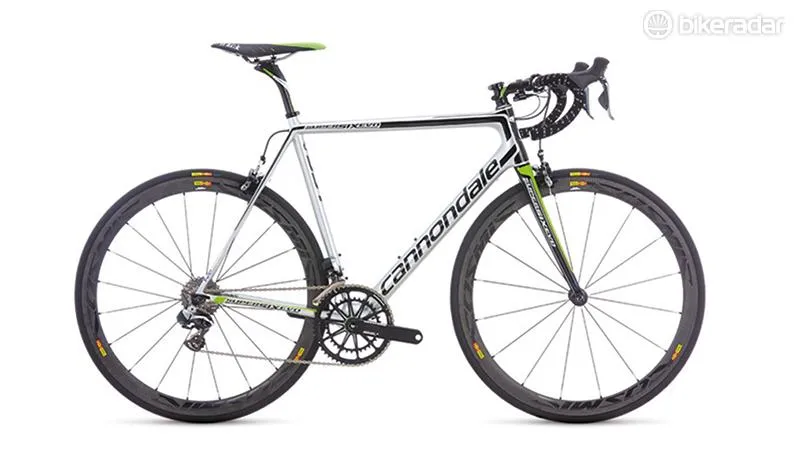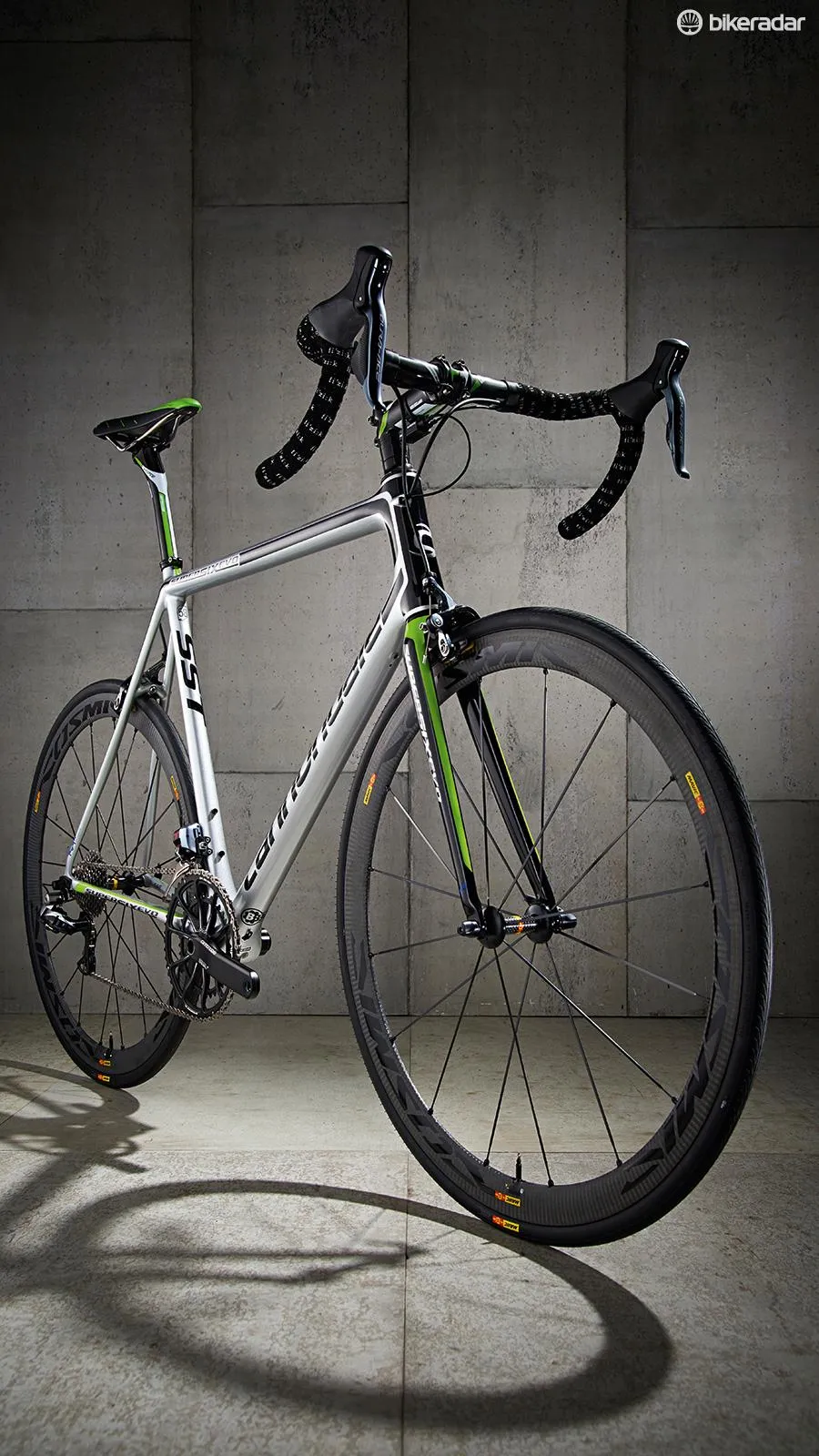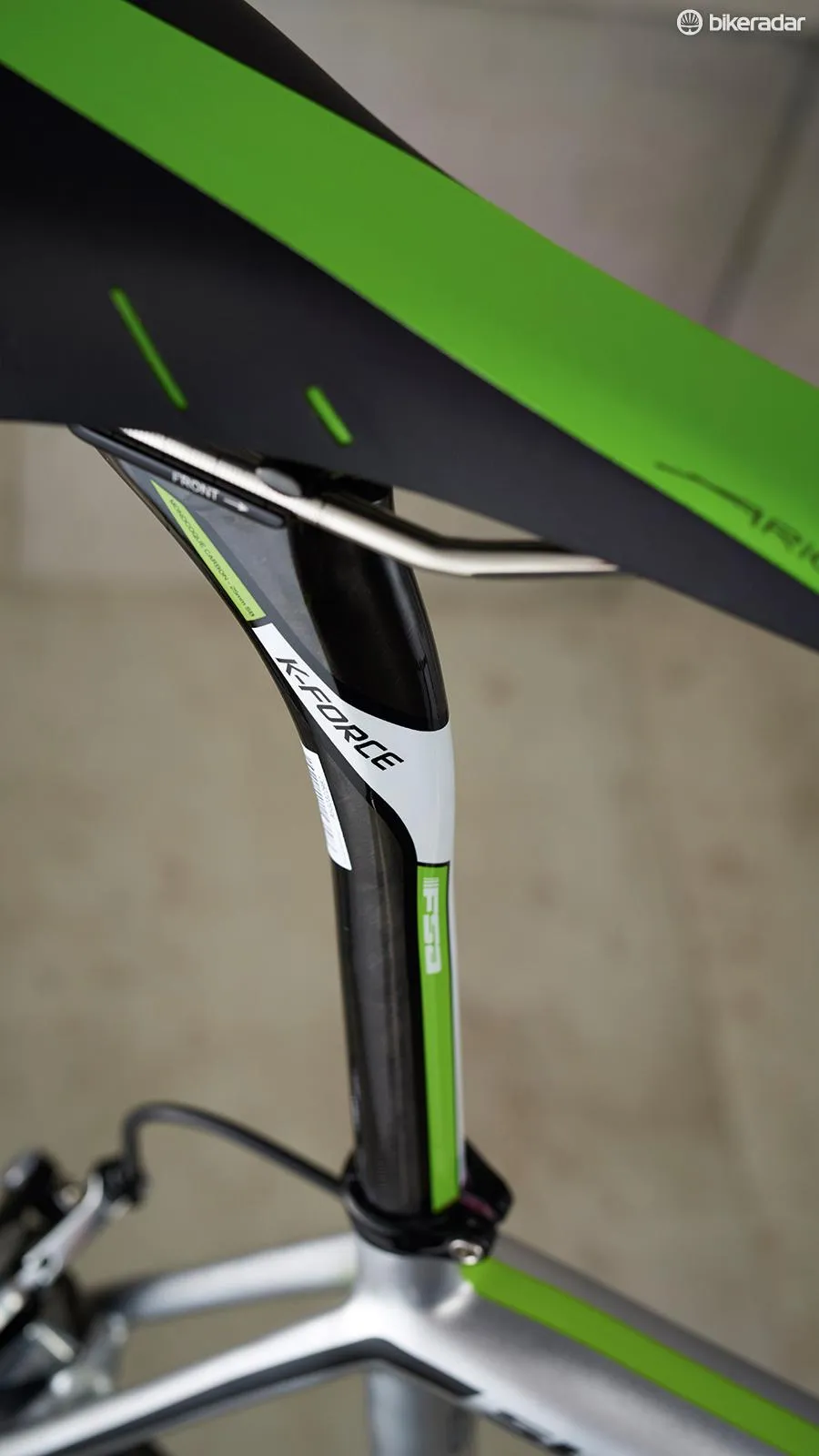The latest SuperSix EVO Hi-Mod Team is the product of years of evolution of Cannondale’s WorldTour bikes, though somewhat unusually these days it doesn’t actually have a lighter frame than its predecessor. What it does have is a lower overall ‘system’ weight.
Take into account the frame, fork, headset, seatpost and crankset and you get to an impressive 1,303g – that's lighter by a full 415g than Specialized’s S-Works Tarmac. This has been achieved by the introduction of a new 280g fork, 40g lighter than the outgoing model, with the new super-slim 25.4mm seatpost saving a further 30g. Cannondale’s distinctive SiSL2 chainset is also lighter than opposition offerings.
Stiff, direct but exceedingly comfortable
But low weight is still only ever part of the equation. Fortunately Cannondale’s boffins have created a ride that backs it up in spades. The classic Cannondale geometry feels familiar and the shape is as we expected – but the feel is something else, the front end stiff and direct.
Your steering inputs are met with a change in direction of such speed and stability that you know that the EVO is going to hit the mark every time, with the bike pretty much there before you even have a chance to think about it. As you’d expect with a bike this light the SuperSix climbs spectacularly, echoing the Focus Izalco Max in encouraging you to get out of the saddle and dance on the pedals like a slow-motion Marco Pantani.
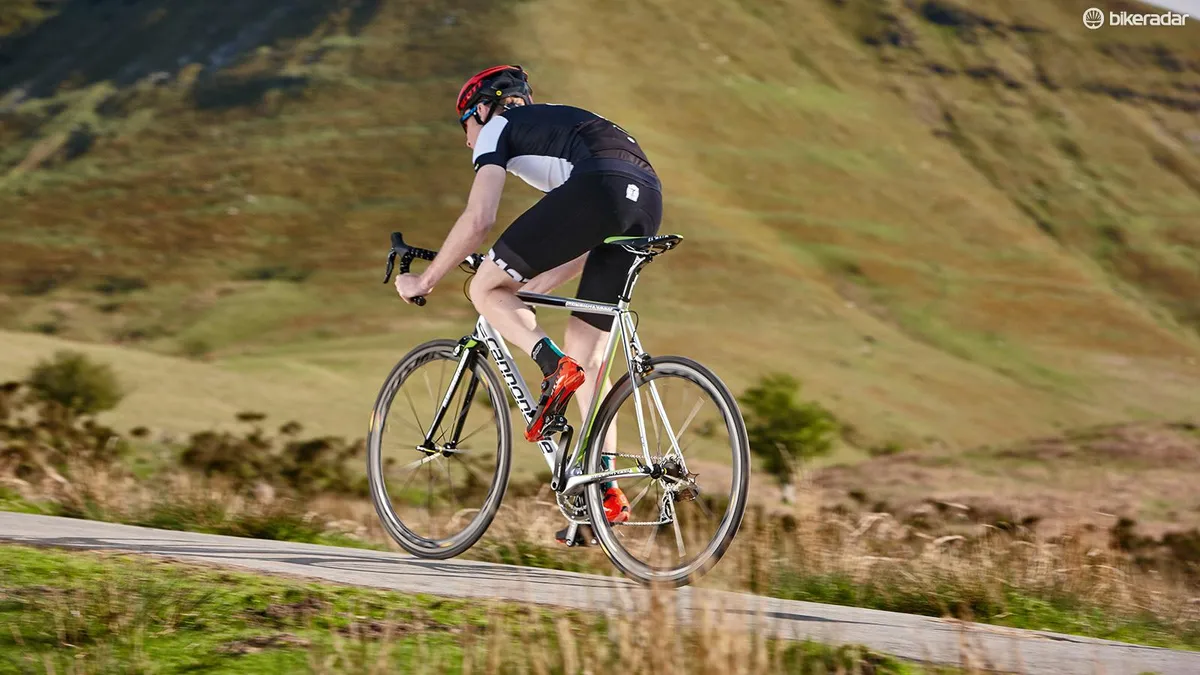
What is equally impressive is just how smooth the EVO feels. Pro-level bikes used to have the – deserved – reputation of being stiff and harsh, but the ability of bikes like this, Cervélo's R5, the Izalco and Trek’s Domane to cope with bad roads has put paid to that.
Cannondale’s designers have combined the smoothness of the Synapse with the lightness of the previous EVO. Yes, the front end is stiff, but it is also composed over rutted roads and gravel-strewn tarmac. The 25.4mm seatpost and a seat tube that increases in diameter down its length keep things equally smooth at the back.
Room for a wheel upgrade
Shimano’s Dura-Ace Di2 is its usual impeccable self, while the FSA cockpit and Fizik’s Arione saddle are both choices that we would make. The only kit we’d really question is the Mavic Cosmic 40 wheelset.
More than 90% of the time the wheels are exactly what you’d want: light, very well put together and with an aerodynamic advantage. The non-Exalith braking track is consistent, if a little noisy under hard braking, but the Cosmics are nowhere near as good, if you're shopping in this bracket, as the Zipp 303s on the Izalco.
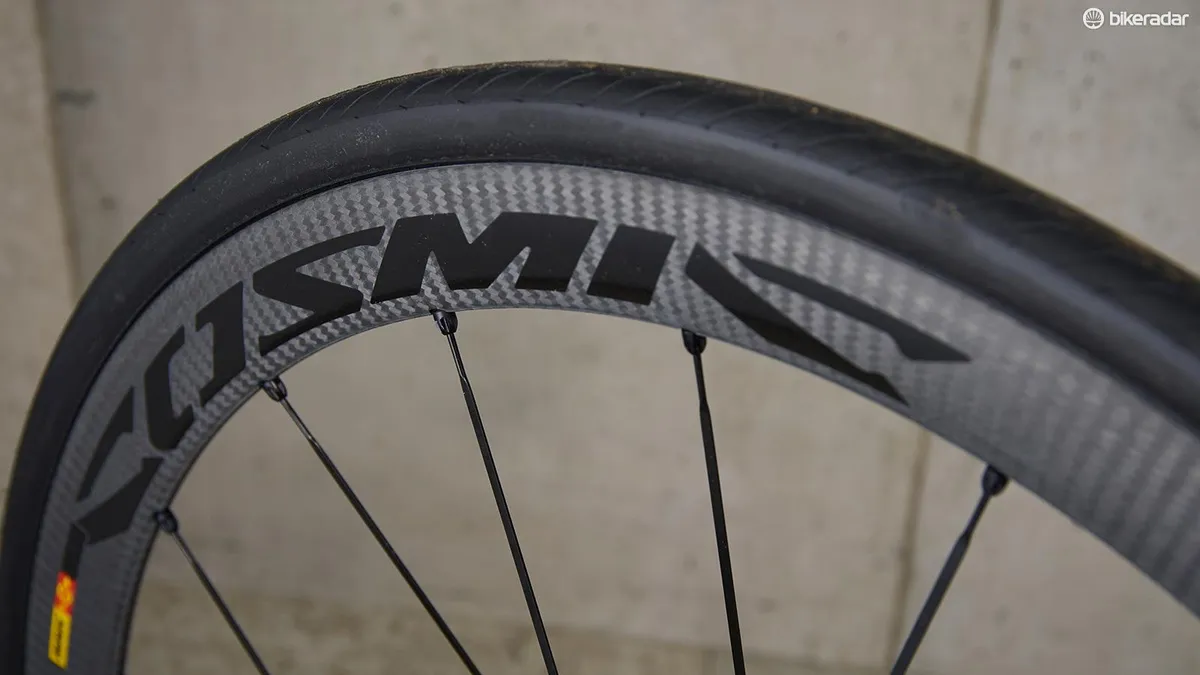
Being overtaken by a large truck can necessitate some sharp reactions on your part and strong crosswinds also require close attention and concentration. Great wheels in fine conditions, but the trade-off at other times is a little too much for our liking.
The EVO’s finish is all you’d expect of a professional-level bike – the pictures really don’t do it justice. The SiSL2 crankset is impossibly stiff for its low weight and the SpideRing offers flawless shifting.
But though the EVO verges on a masterpiece for its ride quality, it's a good deal pricier than Focus’s similarly specced Izalco Max, which offers a comparable cycling experience.
